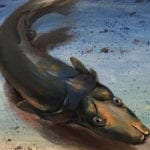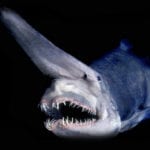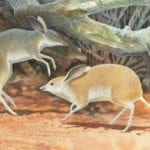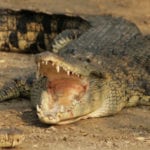 Animals
Animals  Animals
Animals  Weird Stuff
Weird Stuff 10 Weird Things That Warp Your Sense of Time
 Miscellaneous
Miscellaneous Ten More Extremely Unexpected U.S. State “Firsts”
 Humans
Humans 10 Ideas That Scare People to Death
 Music
Music The Cursed Decade: 10 Classic Rock Stars Who Had Low Periods in the 1980s
 Health
Health 10 Crazy Ways Sleep Deprivation Can Affect You
 History
History 10 Enthralling Facts about the Field of Cloth of Gold
 Pop Culture
Pop Culture The Ten Greatest Engineers in Science Fiction History
 Humans
Humans Ten Journalists Who Got Caught Faking the News
 Travel
Travel 10 Best Hiking Trails in America with Breathtaking Views
 Animals
Animals Ten Animals That Produce and Store Toxins in Unlikely Places
 Weird Stuff
Weird Stuff 10 Weird Things That Warp Your Sense of Time
 Miscellaneous
Miscellaneous Ten More Extremely Unexpected U.S. State “Firsts”
Who's Behind Listverse?

Jamie Frater
Head Editor
Jamie founded Listverse due to an insatiable desire to share fascinating, obscure, and bizarre facts. He has been a guest speaker on numerous national radio and television stations and is a five time published author.
More About Us Humans
Humans 10 Ideas That Scare People to Death
 Music
Music The Cursed Decade: 10 Classic Rock Stars Who Had Low Periods in the 1980s
 Health
Health 10 Crazy Ways Sleep Deprivation Can Affect You
 History
History 10 Enthralling Facts about the Field of Cloth of Gold
 Pop Culture
Pop Culture The Ten Greatest Engineers in Science Fiction History
 Humans
Humans Ten Journalists Who Got Caught Faking the News
 Travel
Travel 10 Best Hiking Trails in America with Breathtaking Views
10 Species That Are Surprisingly Ancient
When it comes to living fossils, reptiles tend to hog the spotlight. Yet there are mammals, trees, and birds we might not realize are also remarkably ancient. Some even walked with the dinosaurs in their present form.
10 White-Tailed Deer
3.5 Million Years
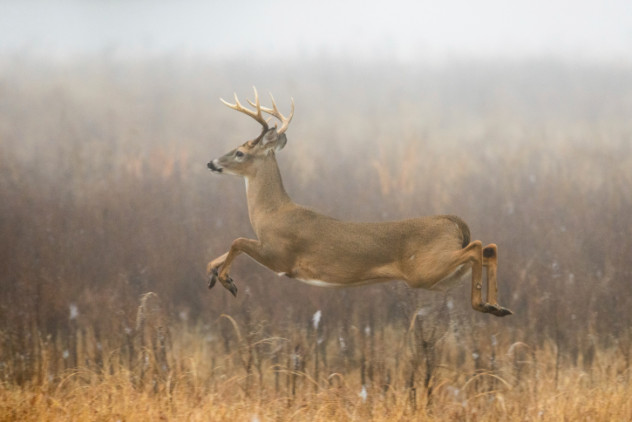
White-tailed deer are the oldest living deer species today. That didn’t happen by accident—these graceful creatures have retained their flexible nature and design for the past 3.5 million years simply because it works.
White-tailed deer practice several survival life hacks. They will eat almost anything. This opportunistic deer will even chow on meat and fish. However, grass is off the menu. These deer completely lack the specialized teeth and stomach most other deer have that would allow them to get any proper sustenance from grazing. They thrive in habitats and climates from the Arctic Circle down to Brazil, the biggest range of any hoofed species in existence.
The deer also practice preventative safety measures. They’ll mess up their own tracks by circling over them several times. When chased, a deer will bolt down familiar escape routes with known obstacles and clear them easily, which slows and discourages the predator. It might even lead its pursuer to other deer in an effort to throw it off. Sometimes more duck than deer, they’ll wade through water to destroy their trail, hide underwater, or even paddle into the ocean where no self-respecting bobcat will follow.
During a good year, a doe can produce twins or triplets. Fawns are expert hiders. For the first few days, they give off no body smell at all, blend into the brush with their dappled coats, and drop like a bag of bricks at the slightest hint of a threat. From birth, this deer is built to survive.
9 Zebra
4 Million Years
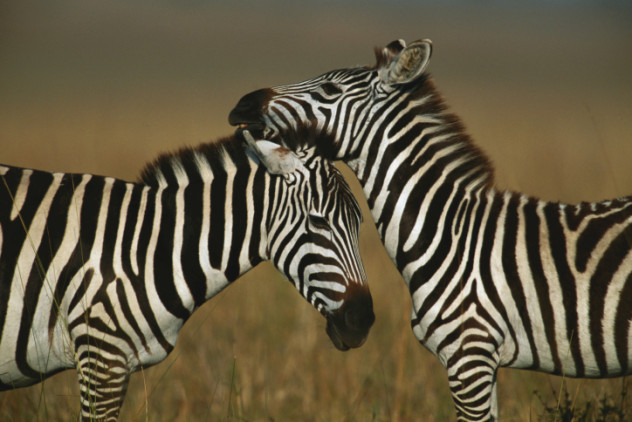
These striped horses of the African plains have been around for a long time. The most ancient is the Grevy’s zebra, believed to have been the first zebra species to appear and a rare sight today. Zebras split from the proto-horse group about four million years ago. These days, zebras canter about in three species and more than 10 subspecies, all with Mohawk hair and their unmistakable barking.
Even though their territories sometimes overlap, the different species of zebras do not interbreed. Each carries a different number of chromosomes, and human attempts to breed Grevy’s zebras to mountain zebras ended in a high number of miscarriages.
The extinct quagga was a subspecies to the most common zebra species today, the plains zebra. The two split during the ice age about 120,000 to 290,000 years ago. DNA tests performed on quagga remains point to the subspecies owing its development to a group of plains zebras that became isolated and developed the trademark quagga coloring and body shape.
The nearest thing America once had to its very own zebra was the Hagerman horse, an animal resembling the Grevy’s zebra that once roamed the shores of the also-vanished Lake Idaho around three million years ago.
8 Red Panda
5 Million Years
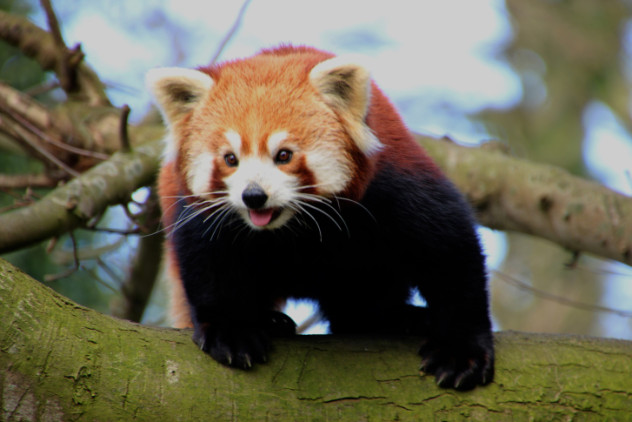
The endangered red panda shares a common ancestor with the giant panda in addition to its false thumb, love of bamboo, and some territory in China. But unlike its black and white cousin, it is not a member of the bear family.
This adorable kitten-like creature goes back five million years, and it is believed that its bamboo nibbling is an ancient inheritance. Even older remains of red panda–like animals found in Eastern Europe and North America possibly date back to as far as 25 million years.
For many years, this so-called “firefox” ran circles around scientists who tried to classify it. The red panda was classified along with raccoons for a long time. It’s not hard to see why; just like raccoons, red pandas have masked faces and ringed tails that help them to balance when scooting about in trees. They also use their front paws like hands by sticking them into rivers when they go for a drink. However, DNA testing finally prompted scientists to classify it into a new family group called Ailuridae.
It’s a good thing that these bushy-tailed animals also thrive on insects, eggs, small birds, rodents, and fruit because their digestive tracts are poorly adapted to process plant matter. Only about a quarter of the nutrients in bamboo gets absorbed.
7 Sandhill Crane
10 Million Years

Of the 15 crane species that still exist, the sandhill crane has the largest population and territory. The oldest fossil of the species was discovered in Florida and clocked in at 2.5 million years old, but it might not really be the most ancient. Another fossil was unearthed in Nebraska and presents a pretty convincing case that the sandhill crane is actually much older than first believed. The Nebraska fossil is about 10 million years old and identical to the sandhill crane that exists today. This would make it the oldest living bird species in the world.
From March to April, a breathtaking 500,000 of these grey-blue cranes with their red caps migrate to Canada and Alaska, traveling as far as 650 kilometers (400 mi) in a single day. These birds elegantly dance for a lifelong mate and then get down to the business of nesting in the wetlands and raising a fledgling or two.
Chicks hatch with open eyes, are capable of walking only eight hours after birth, and can even swim. Adult cranes care for their offspring for the better part of a year—up to 10 months—protecting them by hissing at or kicking predators. The species is generally not considered to be under pressure, but Mississippi sandhill cranes and Cuba sandhill cranes are now considered endangered.
6 Hedgehog
15 Million Years
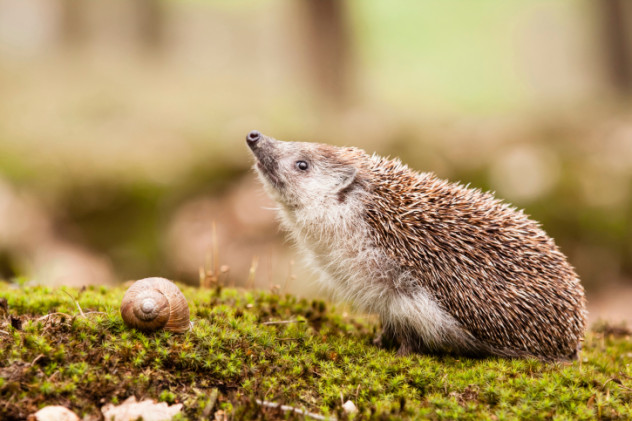
Believe it or not, this tiny mammal has been spreading prickly cuteness for the past 15 million years, and not as some vaguely familiar ancestral. The hedgehogs of yesteryear were just the same as the hedgehogs of today.
Their trademark quills are hollow spikes of keratin, the same protein that forms human hair and nails. Newborn hedgehogs have tiny, barely visible quills underneath their skin and adopt their pincushion look within a few days. The “hog” part of their name comes from the pig-like squealing and grunting noises produced when they forage for food and communicate with other hedgehogs.
Not all hedgehogs curl up into a defensive ball or hibernate during the winter. It differs from species to species. Some desert hedgehogs prefer to run from danger and only curl up as a last resort. Modern hedgehogs all just about fit into person’s hand, but their tiniest ancestor was a primitive species, Silvacola acares, that lived 52 million years ago and was about the size of a human thumb.
5 Flamingo
18 Million Years
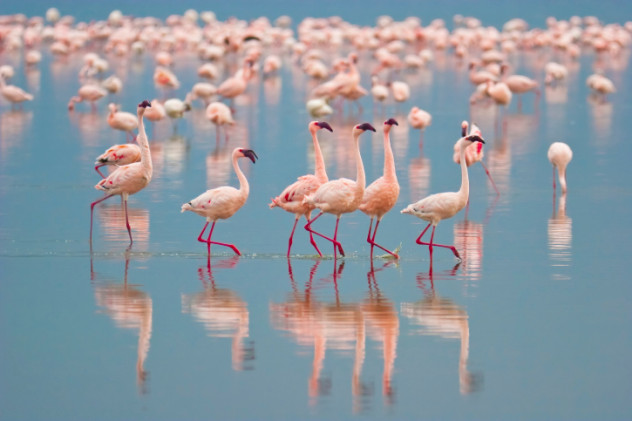
What was once a Spanish lake in the Miocene era is now a stretch of limestone. In it, researchers have discovered a nesting site—eggs and all—they believe once belonged to a prehistoric flamingo that dates back 18 million years.
On a microscopic level, scans revealed that the five eggs were very similar to those of modern-day flamingos. There were some differences, though. The way the fossilized nest was constructed—built with plant matter like twigs and leaves—differs greatly from the mud towers the pink birds construct in modern times. Flamingos today also lay only a single egg per nest, not five. Since the nest more closely matched that of modern grebes, a diving bird and a close relative of the flamingo, researchers are also considering that it might’ve belonged to an ancestor of both birds.
Baby flamingos are either grey or white and develop their flamboyant pink plumage in just a few years’ time. The color comes from the ingestion of a reddish-orange pigment called beta carotene—the same stuff in carrots and pumpkins—found in certain algae and crustaceans. If a flamingo were to stop eating these tinted foods, its color would eventually fade.
4 Aardvark
35 Million Years
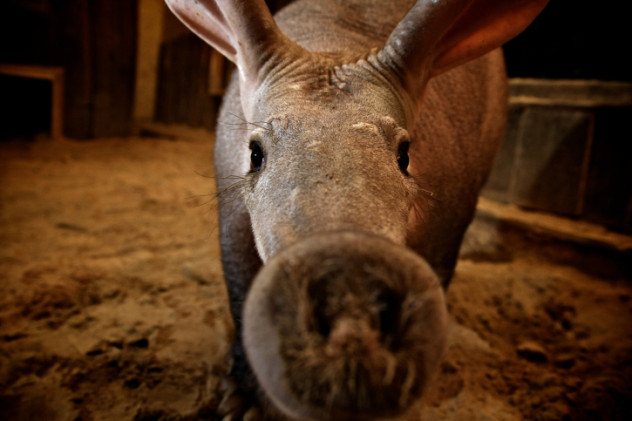
Looking like the lovechild of a kangaroo and a clawed pig, this curious mammal hasn’t evolved much over the past 35 million years. The aardvark has primitive teeth with no enamel or roots, is missing its collar bones, and waddles around with webbed back feet. This animal is very elusive in both life and the fossil record—quality specimens are rare finds.
Scientists believe that the aardvark is a genetic anomaly in the sense that its genes evolved little over time compared to other mammals. In fact, they’ve evolved so little that they think the African animal is the closest match to the common ancestor of all mammals that share a similar set of chromosomes.
It’s hard to determine a gender by just looking at an aardvark, but males tend to be bigger and can weigh up to 100 kilograms (220 lb). Females deliver a single hairless cub during breeding season. They consume huge quantities of ants with their sticky, ribbon-like tongues, but the aardvark is not related to the South American anteater.
The aardvark is the only remaining member of an order of animals that dates back to the days of the dinosaurs. While they are not exactly as old as their family classification, aardvarks have still been slurping up ants for 35 million years.
3 Virginia Opossum
70 Million Years
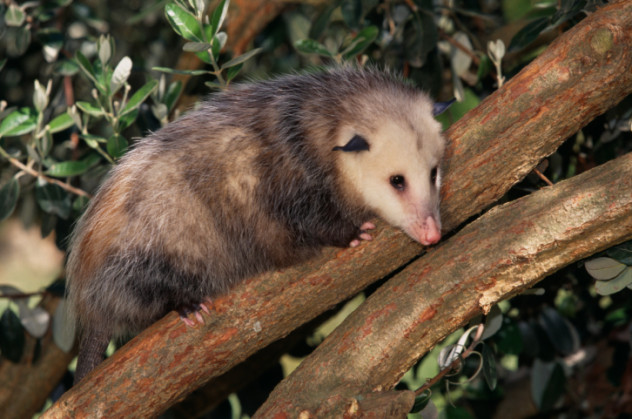
North America’s only marsupial is a blend of a cute teddy and a sewer rat. Their fossil record goes back 70 million years, making them one of Earth’s oldest mammals. The Virginia opossum has kept its basic form through all that time. Like the kangaroo, it carries young in a pouch so tough that it sometimes protects the babies when their mother is hit by a vehicle. The pouch is also waterproof, keeping the bee-sized newborns completely dry when the mother swims.
No one can really say for how long they’ve used the survival ploy that makes them famous—“playing possum” in the face of danger—but opossums are really good at it. When they have no other options left, this mild-mannered marsupial will keel over for up to six hours of lifelessness, slow their heartbeat and breathing, and cross their toes that the particular predator hunting them isn’t into carrion. Contrary to popular belief, they don’t do it often, and it’s a tactic most often exhibited by the juveniles of the species.
Another strategy the opossum uses to deter hunters is to display its 50 teeth, a record number for a mammal, while drooling and bubbling spit in an effort to appear too diseased to eat.
2 Indian Purple Frog
134 Million Years
The purple frog hopped alongside the dinosaurs for about 70 million years, survived the famous disaster that killed them, and then made it to modern times to bask in the amazement of scientists. This rare amphibian, which grows to a total length of 7 centimeters (2.75 in) and spends most of its life underground, was recently discovered in the Western Ghats Mountains of India.
Soon, scientists had to create a new family for it when DNA tests determined that it was unique among frogs and that it belonged to no other group in existence today. It’s an odd creature. The purple frog has a tiny, pointy face directly connected to its blob-like body—it doesn’t exactly have a head or neck. During the monsoon season, purple frogs leave their burrows to mate and mainly subsist on termites. Their underground lives make them hard to find, so scientists are uncertain about how many are still left in the wild.
As living fossils, these frogs are very important because they may shed more light on amphibian evolution and how species reacted to ancient landmass shifts. The purple frog itself survived such a landmass separation about 65 million years ago when the Seychelles split from India.
1 Ginkgo Biloba
200 Million Years
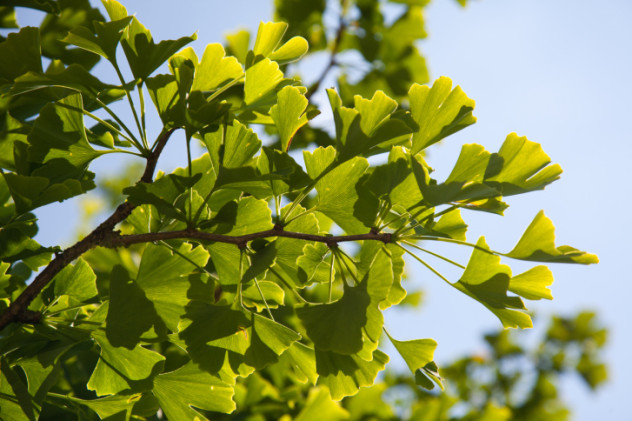
The ginkgo biloba tree is a common sight on the streets of cities everywhere and often overlooked, but they have an incredible heritage. It is the oldest tree species that still exists unchanged, in this case for the past 200 million years.
The seeds smell terrible—almost like vomit—but it’s suspected that the odor attracts some animals to help sow the species around. The Chinese were the first to recognize the worth of the ginkgo about 1,000 years ago when they began to propagate it, most likely as a nut tree. They still mainly use the seeds for medicinal purposes, and some health products sitting on shelves in the West are also made from an extract of the ginkgo’s butterfly-shaped, pest-resistant leaves. All other trees related to the ginkgo have long since gone extinct, leaving only the ginkgo biloba tree to withstand everything being thrown at it—including an atom bomb. A tree growing outside of a Japanese temple when the atomic bomb was dropped on Hiroshima in 1945 remarkably sprouted new leaves the next spring. It was about 700 meters (0.5 mi) from the epicenter of the explosion.
This species is blessed with longevity. It’s still a youngster when it turns a century old. This botanical wonder’s unprecedented survival can be partially explained by its ability to beat pests and diseases and its knack for re-sprouting under stress, but how it evolved, what originally pollinated it, and why the other ginkgo species died out are questions botanists are still struggling to solve.
Jana Louise Smit is an obsessive list-maker who wants a pet aardvark.


